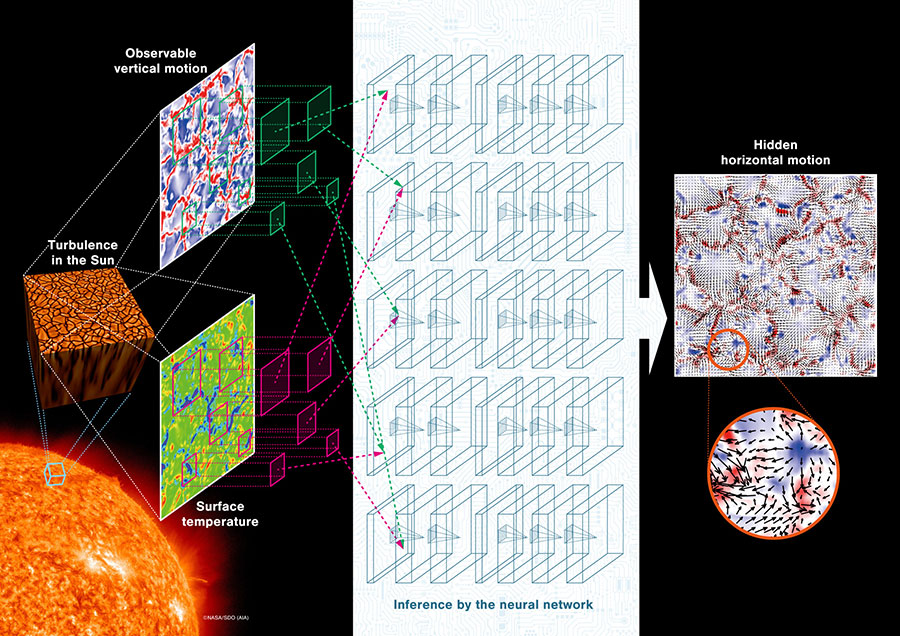
Scientists developed a neural network deep learning technique to extract hidden turbulent motion information from observations of the Sun. Tests on three different sets of simulation data showed that it is possible to infer the horizontal motion from data for the temperature and vertical motion. This technique will benefit solar astronomy and other fields such as plasma physics, fusion science, and fluid dynamics.
The Sun is important to the Sustainable Development Goal of Affordable and Clean Energy, both as the source of solar power and as a natural example of fusion energy. Our understanding of the Sun is limited by the data we can collect. It is relatively easy to observe the temperature and vertical motion of solar plasma, gas so hot that the component atoms break down into electrons and ions. But it is difficult to determine the horizontal motion.
To tackle this problem, a team of scientists led by the National Astronomical Observatory of Japan and the National Institute for Fusion Science created a neural network model, and fed it data from three different simulations of plasma turbulence. After training, the neural network was able to correctly infer the horizontal motion given only the vertical motion and the temperature.
The team also developed a novel coherence spectrum to evaluate the performance of the output at different size scales. This new analysis showed that the method succeeded at predicting the large-scale patterns in the horizontal turbulent motion, but had trouble with small features. The team is now working to improve the performance at small scales. It is hoped that this method can be applied to future high resolution solar observations, such as those expected from the SUNRISE-3 balloon telescope, as well as to laboratory plasmas, such as those created in fusion science research for new energy.
These results appeared as Ishikawa et al. "Multi-Scale Deep Learning for Estimating Horizontal Velocity Fields on the Solar Surface" in the online edition of Astronomy and Astrophysics on February 16, 2022.






